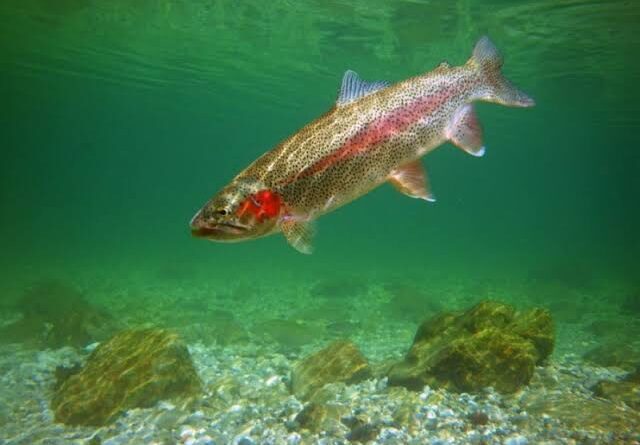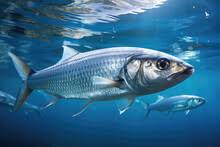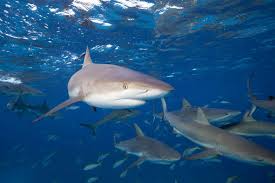How to Farm and Care for Rainbow Trout Fish (Oncorhynchus mykiss)
Rainbow trout scientifically classified as Oncorhynchus mykiss is a fascinating and colorful fish found in rivers and lakes around the world. These vibrant creatures are known for their distinctive pink stripe running along their sides, which adds to their allure.
Rainbow trout are a type of salmonid, belonging to the same family as salmon. They have a streamlined body with small scales, and their colors can vary, ranging from silver to greenish-blue. However, what truly sets them apart is the beautiful rainbow-like band that gives them their name.
These fish are not only aesthetically pleasing but also hold significant ecological importance. They play a crucial role in maintaining the balance of aquatic ecosystems. Rainbow trout are often an indicator of the health of rivers and lakes, as their presence suggests clean and well-oxygenated water.
One interesting aspect of rainbow trout is their life cycle. They begin their lives as tiny eggs laid in gravel beds by the adult female trout. After hatching, the young trout, called fry, spend their early days feeding on microscopic organisms in the water. As they grow, they undergo various developmental stages, eventually reaching adulthood.
Rainbow trout are known for their diverse feeding habits. They are opportunistic predators, consuming a variety of prey such as insects, small fish, and even crustaceans. This adaptability contributes to their widespread distribution in different water bodies.
Anglers appreciate rainbow trout for their spirited fight when caught on a fishing line. This has made them a popular species for recreational fishing, adding to their cultural significance. Many fishing enthusiasts are drawn to the challenge of catching these elusive and lively fish.
Conservation efforts are essential to ensure the well-being of rainbow trout populations. Pollution, habitat destruction, and overfishing pose threats to these beautiful creatures. Sustainable practices, such as catch-and-release fishing, help in preserving their numbers and maintaining the delicate balance of aquatic ecosystems.
However, Rainbow trout (Oncorhynchus mykiss) captivates both scientists and nature enthusiasts with its stunning appearance and ecological importance. From their vibrant colors to their vital role in maintaining aquatic ecosystems, these fish are a symbol of the beauty and interconnectedness of the natural world.
Read Also: Feed Lot Fattening of Rams Practice
Selecting the Right Rainbow trout Fish Species for Your Farm
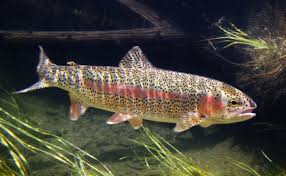
Choosing the suitable rainbow trout (Oncorhynchus mykiss) species for your fish farm is a crucial decision that can impact the success of your aquaculture venture. The diverse array of rainbow trout species offers various characteristics, making it important to consider several factors when making your selection.
Firstly, climate plays a significant role in determining the ideal rainbow trout species for your farm. Different species have specific temperature requirements for optimal growth and reproduction. It is essential to choose a species that thrives in the climate of your region to ensure the well-being and productivity of the fish.
Consideration should also be given to the intended market for your rainbow trout. Some species are known for their superior taste and texture, making them more desirable for commercial purposes. Understanding the preferences of consumers in your target market can guide your choice of rainbow trout species, aligning with the demands of the industry.
Another critical factor is the size and growth rate of the rainbow trout species. Different species exhibit variations in growth rates and maximum sizes. For commercial aquaculture, selecting a species that reaches market size efficiently and consistently is vital for economic viability. Additionally, understanding the growth characteristics can assist in planning feeding regimes and production timelines.
Disease resistance is a paramount consideration in aquaculture, and rainbow trout are no exception. Some species may exhibit greater resistance to specific diseases, reducing the risk of outbreaks and the need for extensive medical interventions. Prioritizing disease-resistant rainbow trout species contributes to the overall health and sustainability of your fish farm.
Local regulations and environmental considerations should also influence your choice of rainbow trout species. Some regions may have restrictions on the introduction of certain non-native species to protect local ecosystems. By selecting a rainbow trout species that aligns with local regulations, you contribute to environmental conservation and avoid potential legal issues.
Furthermore, consulting with experienced aquaculturists and fisheries experts can provide valuable insights into the most suitable rainbow trout species for your specific farming conditions. Their expertise can guide you in making informed decisions based on factors such as water quality, available resources, and management practices.
In addition, selecting the right rainbow trout (Oncorhynchus mykiss) species for your fish farm involves a comprehensive evaluation of climate suitability, market preferences, growth characteristics, disease resistance, and compliance with local regulations. Taking the time to consider these factors will contribute to the success and sustainability of your aquaculture operation.
Setting Up Your Rainbow trout Fish Farm: A Step-by-Step Guide
Establishing a successful rainbow trout (Oncorhynchus mykiss) fish farm involves a series of steps that require careful planning and consideration. Below is a step-by-step guide to help you set up your rainbow trout fish farm.
1. Site Selection: Choose a suitable location for your fish farm. Consider factors such as water quality, availability, and temperature. Ensure that the site complies with local regulations and provides adequate space for expansion.
2. Water Source and Quality: Assess the water source for your farm, whether it’s a natural water body or a controlled system. Ensure that the water quality meets the specific requirements of rainbow trout, including temperature, oxygen levels, and pH.
3. Pond or Tank Design: Design and construct ponds or tanks based on the size and scale of your operation. Consider factors such as water flow, depth, and aeration to create an optimal environment for rainbow trout growth.
4. Stocking Density: Determine the appropriate stocking density for your fish farm. This involves calculating the number of rainbow trout you can accommodate in your ponds or tanks without overcrowding, considering factors like water volume and available resources.
5. Fingerling Selection: Choose healthy and disease-free rainbow trout fingerlings from reputable suppliers. Consider the specific species that align with your farming goals, such as growth rate and market preferences.
6. Feeding and Nutrition: Develop a feeding plan that meets the nutritional needs of rainbow trout at different stages of their life cycle. Use high-quality feed that supports optimal growth and health.
7. Water Management: Implement effective water management practices to maintain water quality. This includes regular monitoring of temperature, oxygen levels, and pH, as well as proper waste management to prevent contamination.
8. Disease Prevention: Establish a biosecurity plan to prevent the introduction and spread of diseases. Quarantine new fish arrivals, implement vaccination programs, and regularly monitor for signs of illness.
9. Harvesting and Processing: Plan the harvesting process based on the desired size of the rainbow trout. Implement humane and efficient harvesting methods, and consider on-site processing facilities if applicable.
10. Marketing and Sales: Develop a marketing strategy for your rainbow trout products. Identify potential markets, build relationships with distributors or retailers, and consider direct-to-consumer sales.
11. Record Keeping: Maintain detailed records of your fish farm operations, including stocking density, feeding schedules, water quality parameters, and health observations. This data will aid in monitoring and improving your farm’s performance over time.
12. Continuous Improvement: Regularly assess and adapt your fish farm practices based on performance metrics and industry developments. Stay informed about advancements in aquaculture technology and management techniques.
By following this step-by-step guide, you can lay a solid foundation for a successful rainbow trout fish farm, combining effective planning, management, and a commitment to continuous improvement.
Nutrition Essentials: Feeding Your Rainbow trout Fish for Optimal Growth
Providing optimal nutrition is crucial for the growth and overall health of rainbow trout (Oncorhynchus mykiss) in your fish farm. Understanding their dietary needs and implementing effective feeding practices are key components of successful aquaculture.
Rainbow trout are known for their varied diet in the wild, feeding on insects, small fish, and crustaceans. When it comes to farm feeding, a balanced and nutritionally complete diet is essential to ensure that the trout receive the necessary nutrients for growth, muscle development, and immune system support.
The primary component of a rainbow trout diet is high-quality fish feed. These feeds are specially formulated to meet the nutritional requirements of the trout at different stages of their life cycle. It’s important to select a feed with the right protein, lipid, vitamin, and mineral content to support their growth and well-being.
Protein is a critical element in rainbow trout nutrition as it contributes to muscle development. High-quality fishmeal, a protein-rich ingredient derived from fish, is often a primary component in trout feeds. However, sustainable and alternative protein sources are being explored to reduce dependence on fishmeal and address environmental concerns.
Lipids, including essential fatty acids like omega-3 and omega-6, play a vital role in promoting energy storage, maintaining cell structure, and supporting immune function. The inclusion of fish oil or plant-based oils in the feed helps provide these essential fatty acids to rainbow trout.
Vitamins and minerals are equally important for the health of rainbow trout. Vitamin supplements, such as A, C, and D, are commonly included in fish feeds to ensure proper growth and metabolic function. Minerals like calcium and phosphorus contribute to bone development and overall skeletal health.
Feeding frequency and portion control are critical aspects of rainbow trout nutrition management. Adjust feeding schedules based on the trout’s age, size, and environmental conditions. Overfeeding can lead to excess waste, negatively impacting water quality and potentially causing health issues for the fish.
Additionally, monitoring feeding behavior and adjusting feed composition as the trout grow is essential. As rainbow trout progress through different life stages, their nutritional needs change. Regularly assessing their growth rates and adjusting the feed formulation accordingly contributes to optimal development.
Water temperature also influences rainbow trout metabolism and, consequently, their feeding patterns. Adjust feeding rates based on seasonal variations to accommodate changes in water temperature and the trout’s metabolic demands.
In addition, providing optimal nutrition for rainbow trout in your fish farm involves a comprehensive understanding of their dietary requirements, careful selection of high-quality fish feed, and diligent feeding management. By prioritizing a balanced and well-monitored diet, you contribute to the overall health, growth, and success of your rainbow trout aquaculture operation.
Read Also: The Systems of Sheep Production
Disease Prevention and Control in Rainbow trout Fish Farming
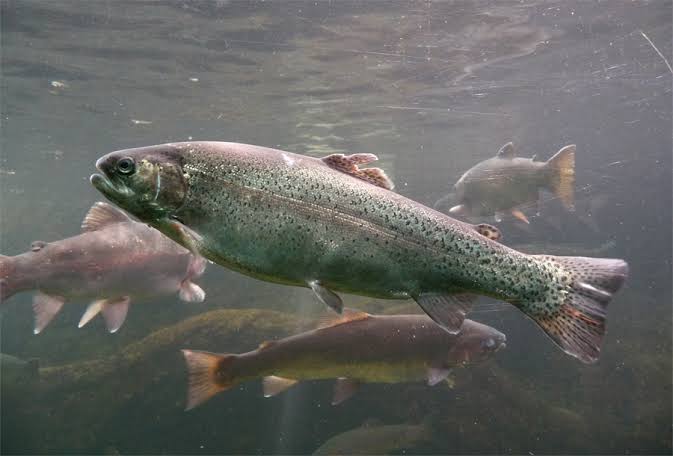
Maintaining the health of rainbow trout (Oncorhynchus mykiss) in a fish farm requires a robust disease prevention and control strategy. Disease outbreaks can have significant consequences for both the fish and the overall operation. Implementing proactive measures is crucial to ensure the well-being of the trout and the sustainability of the aquaculture enterprise.
One fundamental aspect of disease prevention is maintaining optimal water quality. Regular monitoring of parameters such as temperature, dissolved oxygen levels, and pH is essential. Clean and well-oxygenated water helps reduce stress on the fish, making them less susceptible to diseases.
Biosecurity measures are critical in preventing the introduction and spread of pathogens in the fish farm. Implementing strict quarantine protocols for new fish arrivals and regularly screening for potential diseases can help identify and isolate any issues before they escalate.
Vaccination programs are common in rainbow trout farming to enhance disease resistance. Administering vaccines helps prepare the fish’s immune system to defend against specific pathogens, reducing the likelihood of infection and limiting the impact of diseases on the population.
Maintaining a balanced stocking density is vital for disease prevention. Overcrowding can lead to stress, compromised immune systems, and increased susceptibility to diseases. Adequate space and proper population management contribute to a healthier environment for the trout.
Regular health assessments and monitoring are essential components of disease control. Observing fish behavior, checking for abnormal signs, and conducting routine health inspections enable early detection of potential issues. Prompt action in response to any abnormalities can help prevent the spread of diseases within the population.
Quarantine facilities play a crucial role in disease control. Isolating and observing new fish before introducing them to the main population allows for the identification and treatment of any underlying health issues without risking the health of the entire farm.
Implementing a comprehensive and effective treatment plan is essential in the event of a disease outbreak. This may involve the use of antimicrobial agents or other therapeutic interventions, always following responsible and sustainable practices to minimize environmental impact.
Education and training of farm staff are integral to the success of disease prevention and control efforts. Providing team members with the knowledge and skills to identify, manage, and report potential health issues ensures a proactive and coordinated approach to maintaining fish health.
Collaboration with fisheries experts and veterinary professionals is valuable for disease prevention and control. Regular consultations and partnerships with those experienced in fish health management contribute to a well-informed and adaptive strategy in response to evolving disease challenges.
In addition, disease prevention and control in rainbow trout fish farming require a multifaceted approach, encompassing biosecurity, vaccination, monitoring, quarantine, and prompt response strategies.
By prioritizing proactive measures and staying vigilant in health management, aquaculturists can minimize the impact of diseases and maintain the health and productivity of their rainbow trout populations.
Rainbow trout Fish Breeding Techniques: Guide to Successful Reproduction
Breeding rainbow trout (Oncorhynchus mykiss) successfully in a fish farm involves a combination of careful planning, environmental considerations, and an understanding of the unique reproductive characteristics of these fish.
Creating the right conditions for reproduction and ensuring the health of both parent fish and offspring are essential for a successful breeding program.
To initiate the breeding process, it’s crucial to create an environment that mimics the natural conditions conducive to spawning. Rainbow trout are typically spring spawners, so manipulating environmental factors such as temperature and photoperiod can help simulate the changing seasons and trigger the spawning behavior.
In a controlled environment, such as a hatchery or breeding facility, carefully monitor and adjust water temperature to simulate the onset of spring. Increasing the temperature gradually can stimulate hormonal changes in the trout, signaling the onset of the spawning season.
Additionally, manipulating the duration of light exposure can mimic the changing day length associated with spring, further encouraging the trout to enter the reproductive phase.
Once the breeding environment is established, selecting healthy and sexually mature parent fish is crucial. Female rainbow trout typically reach sexual maturity at around two to three years of age, while males mature slightly earlier. Ensuring that both males and females are in peak reproductive condition enhances the chances of successful breeding.
To facilitate the spawning process, provide suitable substrates in the form of gravel or a spawning bed within the breeding tanks. Rainbow trout exhibit the behavior of digging and creating nests, known as redds, for egg deposition. The availability of appropriate substrates encourages this natural behavior and provides a conducive environment for successful reproduction.
Monitoring the reproductive behavior of the trout is vital during the breeding season. As the fish engage in courtship rituals and the females deposit eggs in the prepared nests, attentive observation allows for the timely collection of fertilized eggs. Care should be taken to avoid disturbances that could disrupt the breeding process.
After successful egg collection, the fertilized eggs are incubated in specialized facilities. Maintaining optimal water conditions during the incubation period is critical for the development of healthy embryos. Water temperature, oxygen levels, and water flow must be carefully managed to support the hatching and early development of the rainbow trout fry.
As the fry hatch, they are initially nourished by their yolk sacs. Once the yolk sacs are absorbed, transitioning the fry to appropriate feed is crucial for their continued growth and development. Providing nutritionally balanced and size-appropriate feed helps ensure the health and vitality of the juvenile trout.
Continuous monitoring of water quality, disease prevention measures, and proper management of the growing trout contribute to the success of the breeding program. Regular assessments of growth rates, health parameters, and genetic diversity help maintain the quality of the breeding stock and improve the overall productivity of the rainbow trout population.
Additionally, successful rainbow trout breeding involves creating optimal environmental conditions, selecting healthy parent fish, and closely monitoring the spawning process. Attention to detail, proper management throughout the life stages, and a commitment to maintaining water quality contribute to the success of a rainbow trout breeding program in a fish farm.
Harvesting and Processing Your Rainbow trout Fish Farm Yield
Harvesting and processing the yield from your rainbow trout (Oncorhynchus mykiss) fish farm is a critical stage that requires careful planning and attention to detail. Efficient and humane harvesting methods, coupled with effective processing techniques, contribute to the quality and marketability of the final product.
Timing is a crucial factor in the harvesting process. Choosing the right moment ensures that the rainbow trout are at the desired size and weight for market demands. This requires regular monitoring of growth rates, adjusting feeding regimes, and staying attuned to market trends to optimize the timing of the harvest.
Harvesting methods vary, but common approaches include seining, trawling, or using specialized harvest tanks. The chosen method depends on the size of the operation, the infrastructure available, and the preferences for minimizing stress on the fish. Gentle handling during harvesting is essential to avoid injuries and stress that could affect the quality of the meat.
After harvest, transporting the fish to the processing facility promptly is crucial to maintain freshness. Proper handling and transport methods, including temperature control, help preserve the quality of the rainbow trout and minimize post-harvest stress.
Processing the harvested rainbow trout involves several steps. Gutting and cleaning the fish are typically done immediately to ensure food safety and quality. Depending on the market demand, the fish may be sold whole or filleted. Filleting requires skilled workers and specialized equipment to achieve consistent and high-quality cuts.
Quality control measures during processing are essential. Inspecting each fish for signs of disease, abnormalities, or physical damage ensures that only top-quality products reach the market. Implementing hygiene and sanitation protocols in the processing facility is critical to meet food safety standards and regulations.
Packaging is the final step in preparing the rainbow trout for distribution and sale. Vacuum packaging or other methods that preserve freshness and prevent contamination are commonly employed. Proper labeling with information on the origin, handling, and storage instructions enhances transparency and consumer confidence.
Market considerations play a significant role in determining the processing methods and final presentation of the rainbow trout. Whether catering to local markets, restaurants, or retailers, understanding consumer preferences and market trends guides decisions on packaging, portioning, and presentation.
Efficient logistics and distribution networks are essential to delivering the processed rainbow trout to consumers in a timely manner. Maintaining a cold chain from the processing facility to the point of sale is critical to preserve the freshness and quality of the fish.
The harvesting and processing stage of rainbow trout farming involves meticulous planning, adherence to quality standards, and an understanding of market dynamics. By implementing humane harvesting methods, maintaining strict quality control during processing, and meeting market demands, fish farmers can ensure the success of their rainbow trout products in the competitive marketplace.
Market Strategies for Selling Your Rainbow trout Fish Products

Developing effective market strategies is essential for successfully selling your rainbow trout (Oncorhynchus mykiss) fish products in a competitive market. Understanding consumer preferences, establishing strong relationships with distributors and retailers, and leveraging marketing channels are key components of a successful marketing approach.
Begin by conducting market research to identify your target audience and understand their preferences. Knowing whether there is a demand for fresh whole fish, fillets, or value-added products helps tailor your offerings to meet consumer needs. Consider factors such as taste preferences, packaging preferences, and pricing expectations.
Establishing strong relationships with distributors and retailers is crucial for getting your rainbow trout products into the market. Collaborate with local fish markets, grocery stores, and restaurants to secure distribution channels. Building partnerships with distributors ensures a consistent and widespread presence of your products.
Consider diversifying your product offerings to cater to different market segments. This could include providing various cuts, packaging sizes, or value-added products to meet the diverse needs of consumers. Offering a range of options can help you capture a larger share of the market.
Implementing effective marketing strategies is essential for creating awareness and driving sales. Utilize digital marketing channels, such as social media, to showcase your rainbow trout products. Highlight the quality, sustainability, and freshness of your fish through engaging content, visuals, and storytelling.
Participate in local markets, food festivals, or industry events to showcase your rainbow trout products directly to consumers. Building a direct connection with potential customers allows you to receive immediate feedback, understand market trends, and establish brand recognition.
Certifications and labeling that highlight the sustainability and quality of your rainbow trout products can be attractive to environmentally conscious consumers. Consider obtaining certifications that validate your adherence to sustainable and responsible farming practices.
Collaborate with chefs and restaurants to feature your rainbow trout products on their menus. Partnering with culinary professionals not only introduces your products to a wider audience but also positions them as a premium choice in the culinary landscape.
Ensure that your pricing strategy aligns with market expectations while also reflecting the quality and value of your rainbow trout products. Consider offering promotions or discounts to attract new customers and encourage repeat business.
Implementing transparent and informative labeling on your products can build trust with consumers. Clearly communicate information about the origin, farming practices, and nutritional benefits of your rainbow trout to educate and engage customers.
Regularly evaluate and adapt your marketing strategies based on market trends, customer feedback, and the performance of your products. Staying agile in response to changing market dynamics allows you to maintain a competitive edge in the industry.
In addition, successful marketing of your rainbow trout products involves understanding your target market, establishing strong distribution channels, utilizing effective marketing channels, and adapting to evolving consumer preferences. By combining these strategies, you can position your rainbow trout products as a desirable choice in the marketplace.
Sustainability Practices in Rainbow trout Fish Farming: A Green Approach
Embracing sustainability practices in rainbow trout (Oncorhynchus mykiss) fish farming is not only environmentally responsible but also essential for the long-term viability of the industry. Implementing a green approach involves considering the ecological impact of farming operations, minimizing resource use, and prioritizing practices that contribute to environmental conservation.
1. Water Management: Efficient water management is a cornerstone of sustainable rainbow trout farming. Implementing recirculating aquaculture systems (RAS) can significantly reduce water consumption by continuously filtering and reusing water. This not only conserves water resources but also minimizes the environmental impact of effluent discharge.
2. Responsible Feed Practices: Sustainable feed sourcing is crucial for minimizing the environmental footprint of rainbow trout farming. Opting for feeds that use responsibly harvested fishmeal and plant-based ingredients helps reduce the pressure on wild fish stocks and promotes a more sustainable feed supply chain. Additionally, exploring alternative protein sources and researching nutrient-dense feeds contributes to a greener approach.
3. Habitat Protection and Restoration: Implementing practices that protect and restore natural habitats is integral to sustainability. Maintaining buffer zones around water bodies, preserving riparian areas, and avoiding the use of harmful chemicals contribute to the overall health of ecosystems surrounding the farm.
4. Disease Prevention and Organic Practices: Adopting disease prevention strategies, such as vaccination programs and biosecurity measures, reduces the need for antibiotics and other medications. Prioritizing organic practices minimizes the environmental impact of chemical usage and aligns with sustainable farming principles.
5. Energy Efficiency: Implementing energy-efficient technologies, such as solar or wind power, can significantly reduce the carbon footprint of rainbow trout farming operations. This includes using energy-efficient equipment for aeration, water circulation, and other essential processes.
6. Biodiversity Conservation: Creating and maintaining a balanced ecosystem within and around the farm supports biodiversity. Avoiding the introduction of non-native species, protecting native flora and fauna, and promoting biodiversity contribute to a more resilient and sustainable aquaculture system.
7. Waste Management: Efficient waste management practices are vital for sustainability. Recycling and repurposing waste, such as fish waste and uneaten feed, can contribute to a circular economy within the farm. Additionally, implementing proper waste treatment systems minimizes the environmental impact of effluents.
8. Certification and Transparency: Seeking and obtaining certifications from reputable sustainability organizations adds credibility to rainbow trout farming practices. Certifications such as Aquaculture Stewardship Council (ASC) or Best Aquaculture Practices (BAP) signal to consumers that the farm adheres to strict sustainability standards. Transparent communication about farming practices builds trust with environmentally conscious consumers.
9. Community Engagement: Engaging with local communities and stakeholders fosters a more sustainable approach. Collaborating with local authorities, educational institutions, and community organizations can lead to shared initiatives that benefit both the environment and the local economy.
10. Continuous Improvement: Embracing a commitment to continuous improvement involves staying informed about advancements in sustainable aquaculture practices. Regularly evaluating and updating farming methods based on new technologies and research ensures that the farm remains on the cutting edge of environmentally friendly practices.
In addition, sustainability practices in rainbow trout fish farming require a holistic and proactive approach. By integrating environmentally responsible methods into every aspect of the operation, fish farmers can contribute to the conservation of natural resources, protect ecosystems, and ensure the long-term viability of rainbow trout farming.
Common Issues and their Solutions in Rainbow trout Fish Farming
Rainbow trout (Oncorhynchus mykiss) fish farming, like any agricultural endeavor, comes with its share of challenges. Addressing common issues promptly is crucial to maintaining the health and productivity of the fish. Here are some common issues and their potential solutions:
1. Disease Outbreaks:
Issue: Diseases can spread rapidly in a fish farm, affecting the health of the rainbow trout population.
Solution: Implement a robust biosecurity plan, including quarantine procedures for new fish, regular health monitoring, and vaccination programs. Promptly isolate and treat infected individuals to prevent the spread of diseases.
2. Poor Water Quality:
Issue: Degraded water quality can lead to stress, diseases, and reduced growth rates.
Solution: Regularly monitor water parameters such as temperature, oxygen levels, pH, and ammonia. Implement proper aeration, filtration, and waste management systems. Adjust stocking densities to maintain optimal water quality.
3. Overcrowding:
Issue: High stocking densities can lead to stress, increased competition for resources, and higher susceptibility to diseases.
Solution: Regularly assess and adjust stocking densities based on the size and condition of the fish, as well as the capacity of the farming system. Avoid overstocking to prevent adverse effects on fish health.
4. Feed Management Issues:
Issue: Overfeeding or underfeeding can impact the health and growth of rainbow trout.
Solution: Develop a precise feeding plan based on the nutritional needs of the fish at different life stages. Monitor feed conversion ratios and adjust feeding rates accordingly. Use high-quality, nutritionally balanced feeds.
5. Temperature Fluctuations:
Issue: Sudden changes in water temperature can stress rainbow trout and affect their metabolism.
Solution: Implement temperature control measures, especially during extreme weather conditions. Gradually acclimate fish to changes in temperature. Monitor and maintain consistent water temperatures within the optimal range for rainbow trout.
6. Predation:
Issue: Predators, such as birds or mammals, can pose a threat to rainbow trout in outdoor farming systems.
Solution: Install protective netting or covers to deter aerial predators. Implement deterrents or fencing to prevent land-based predators from accessing the fish. Regularly inspect and maintain protective structures.
7. Oxygen Depletion:
Issue: Inadequate oxygen levels can lead to stress and negatively impact the health of rainbow trout.
Solution: Ensure proper aeration and water circulation. Monitor oxygen levels regularly, especially during warm weather when oxygen solubility decreases. Avoid overstocking, which can contribute to oxygen depletion.
8. Algae Blooms:
Issue: Excessive algae growth can lead to oxygen depletion and water quality issues.
Solution: Implement strategies to control nutrient levels, such as proper waste management. Use UV filters or other algae control methods. Monitor water quality regularly to detect and address algae issues promptly.
9. Handling Stress:
Issue: Improper handling during harvesting or other activities can induce stress in rainbow trout.
Solution: Train farm staff in gentle handling techniques. Use appropriate equipment and methods during harvesting and other activities to minimize stress. Implement best practices for fish transportation.
10. Regulatory Compliance:
Issue: Non-compliance with local regulations and environmental standards can lead to legal and environmental issues.
Solution: Stay informed about and comply with local regulations regarding water use, waste management, and environmental impact. Collaborate with regulatory agencies and seek guidance to ensure adherence to standards.
In conclusion, proactive management and swift responses to issues are essential in rainbow trout fish farming. Regular monitoring, adherence to best practices, and continuous improvement contribute to a successful and sustainable aquaculture operation.
Read Also: Environmental Management for Homes

